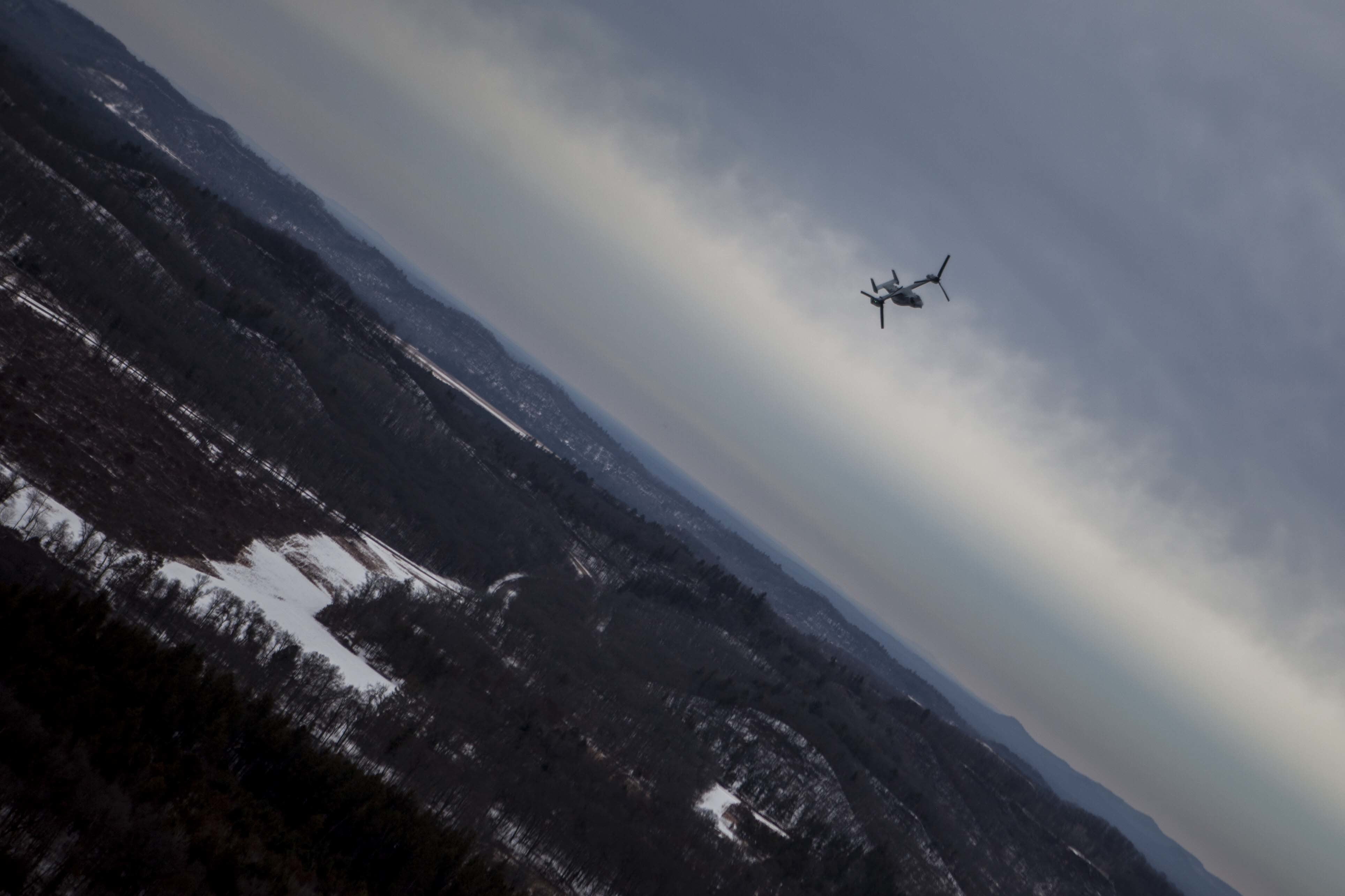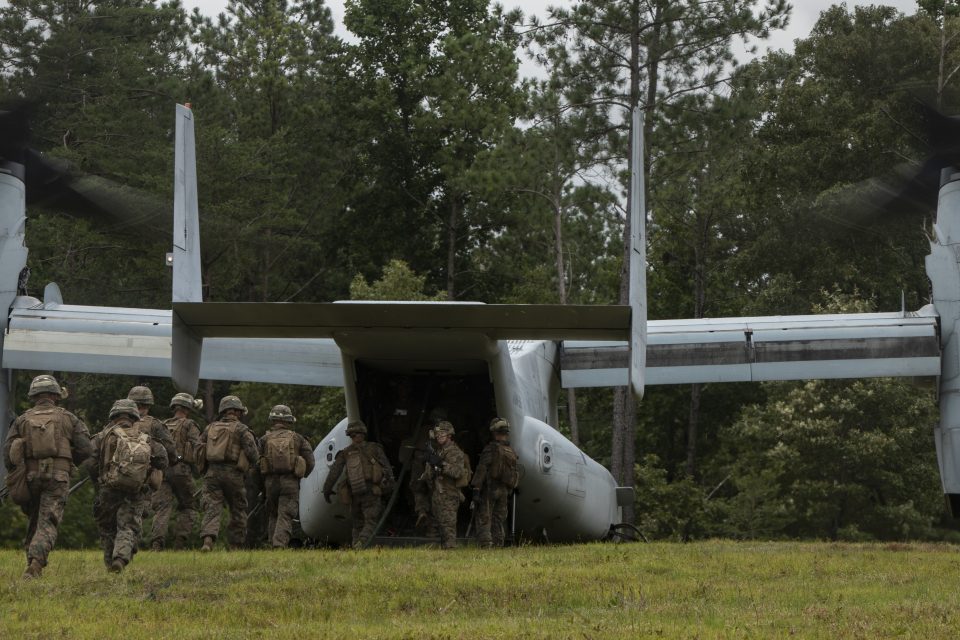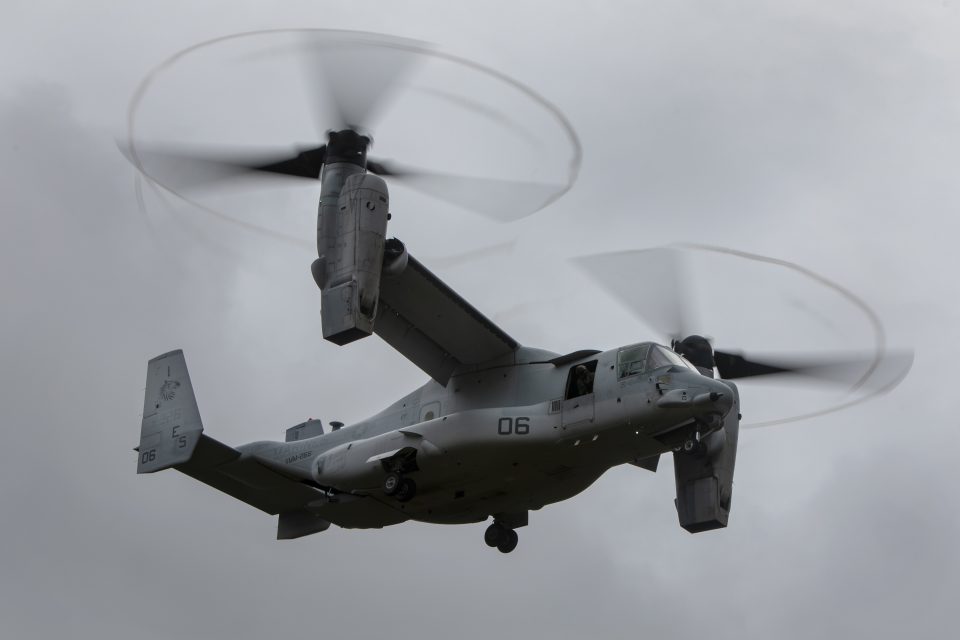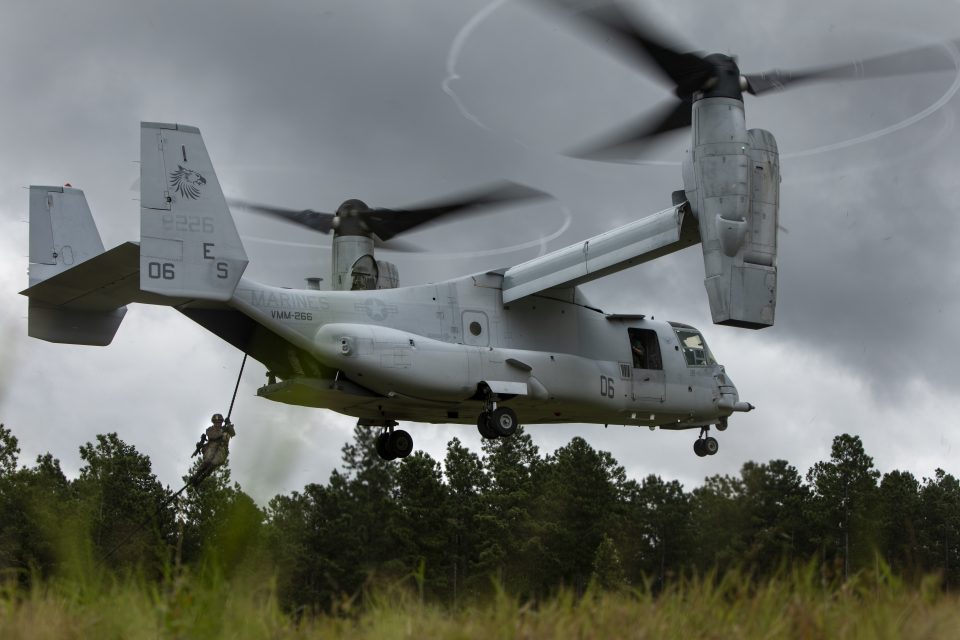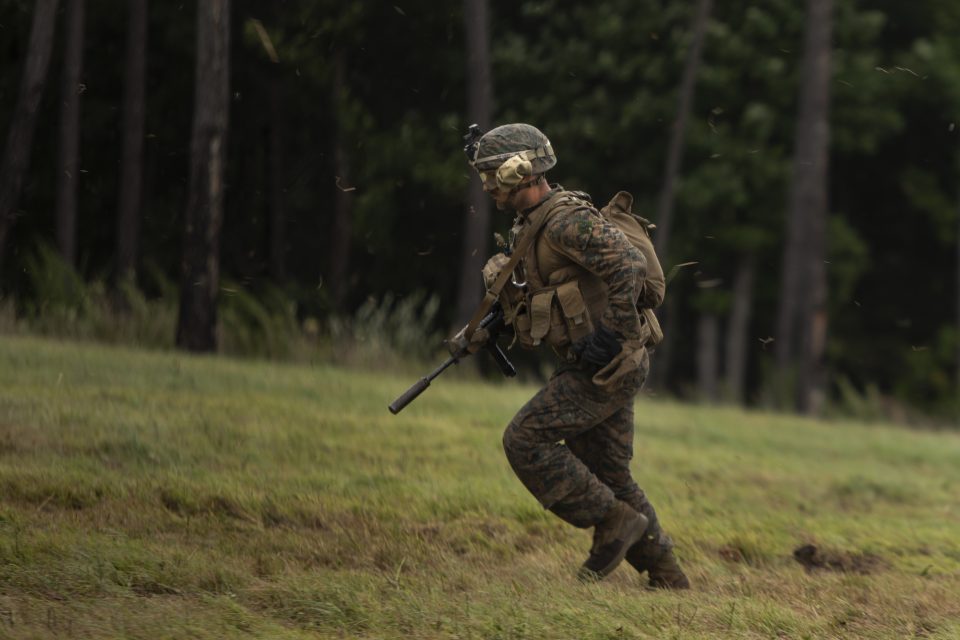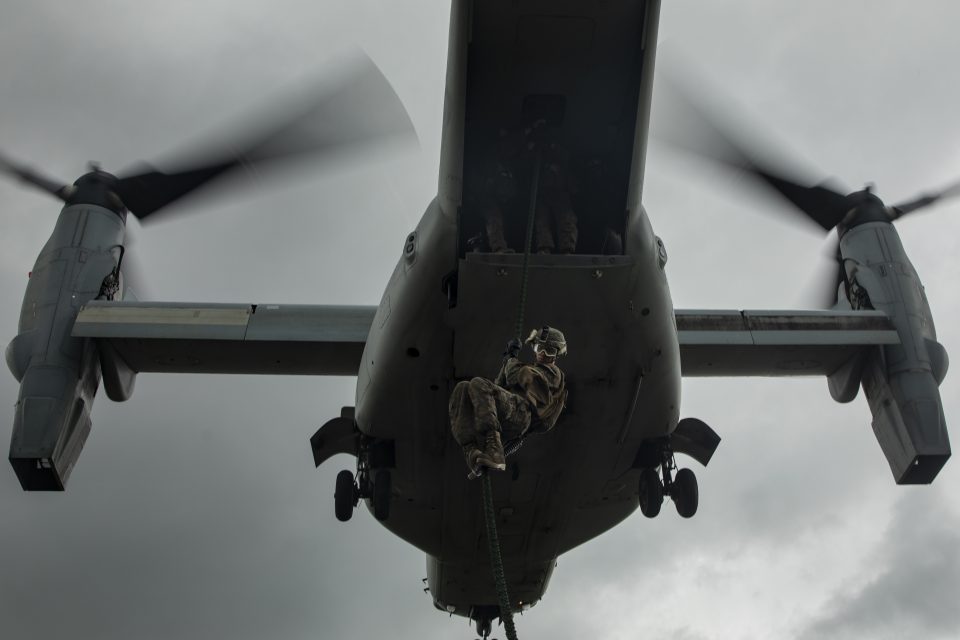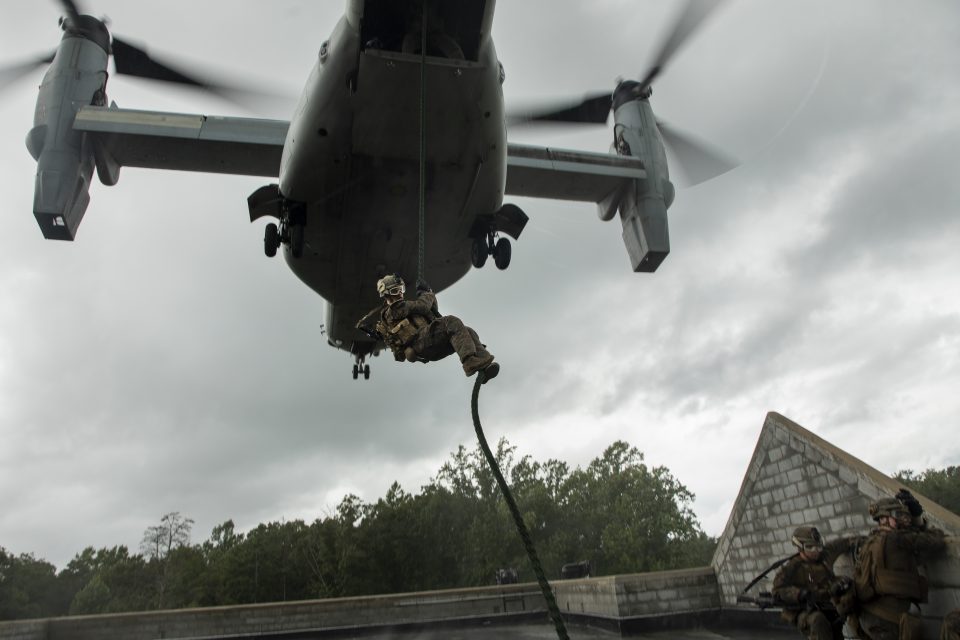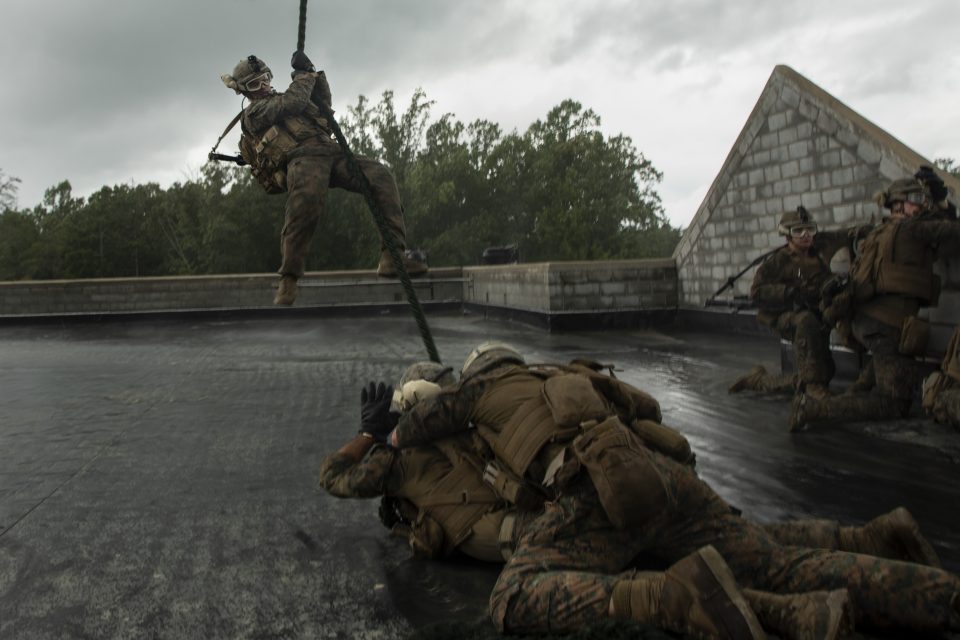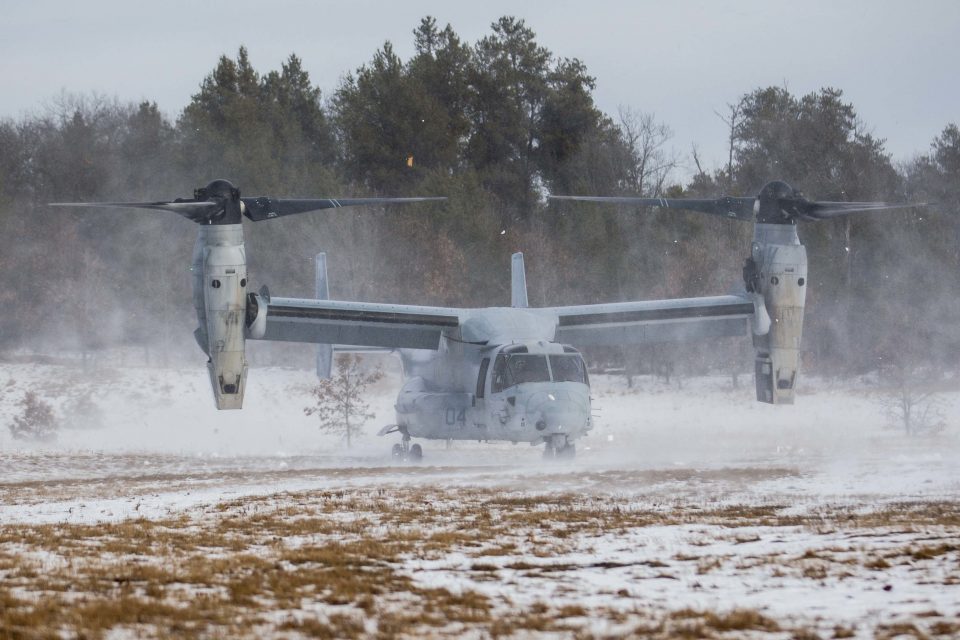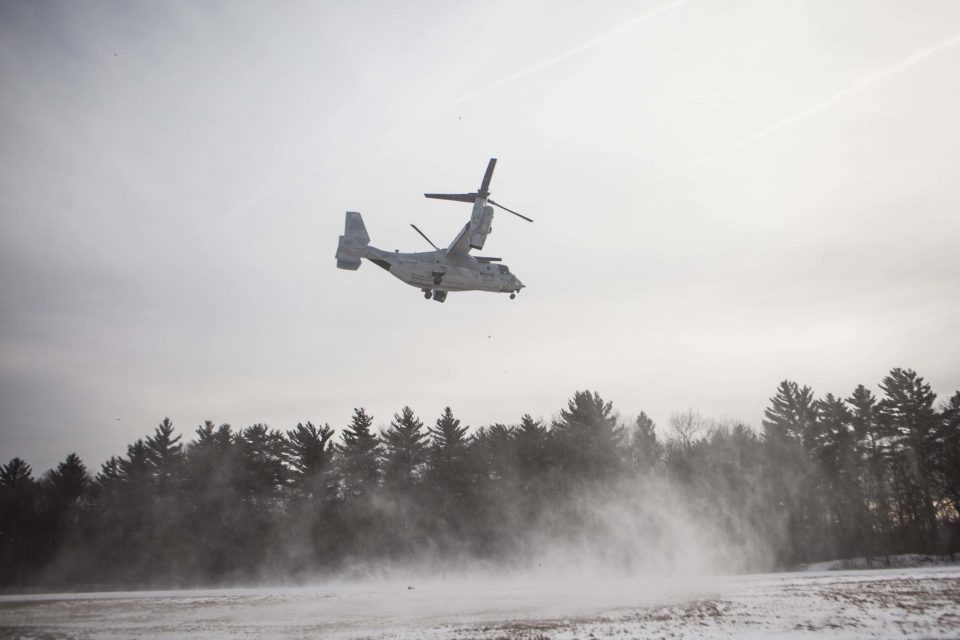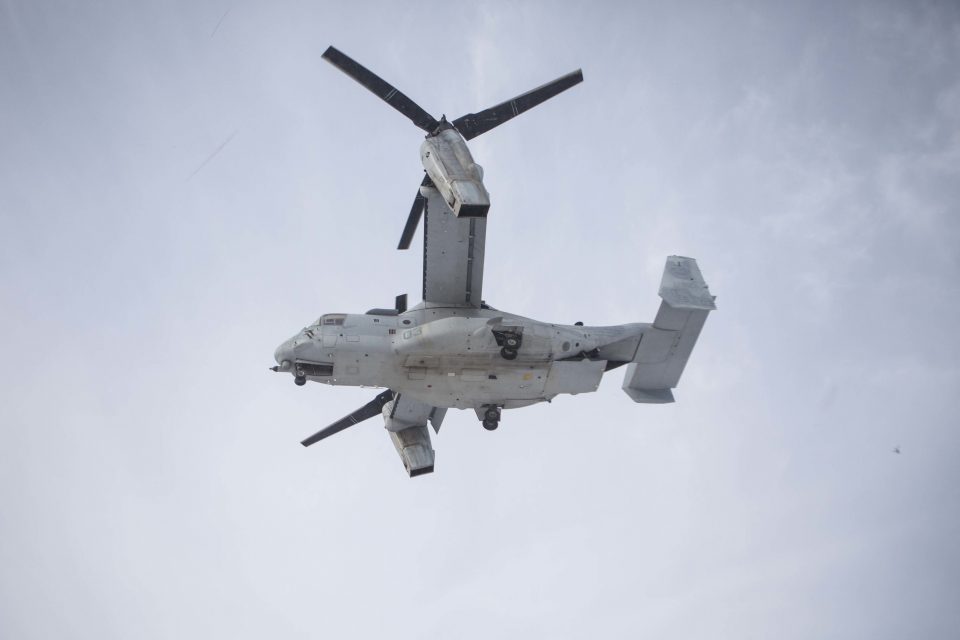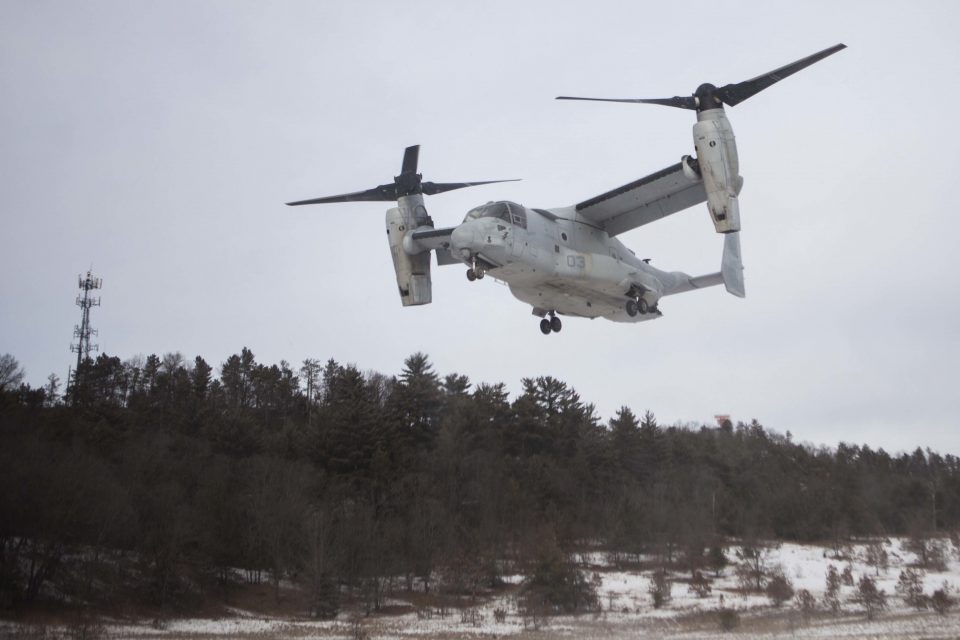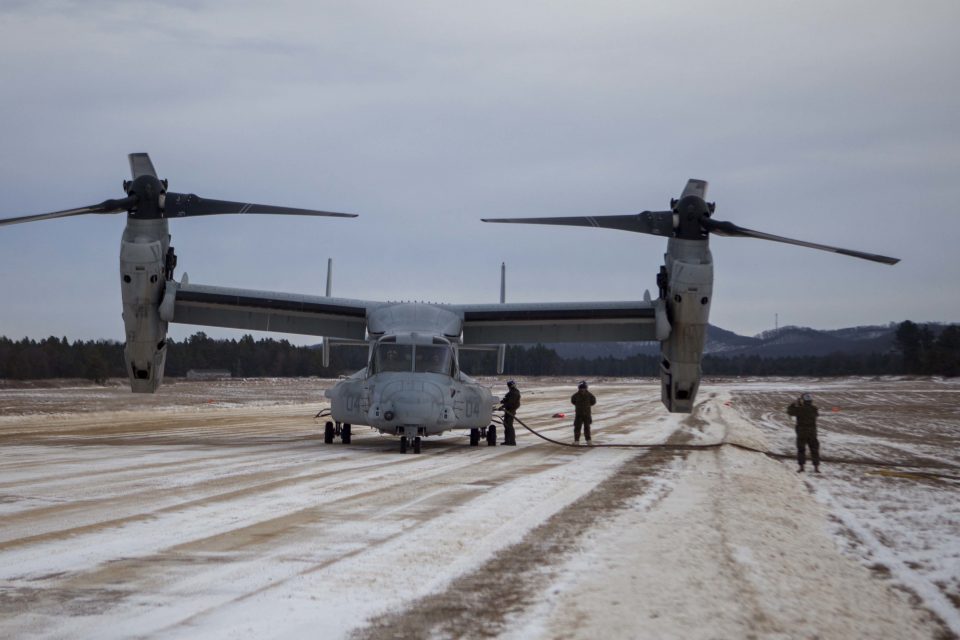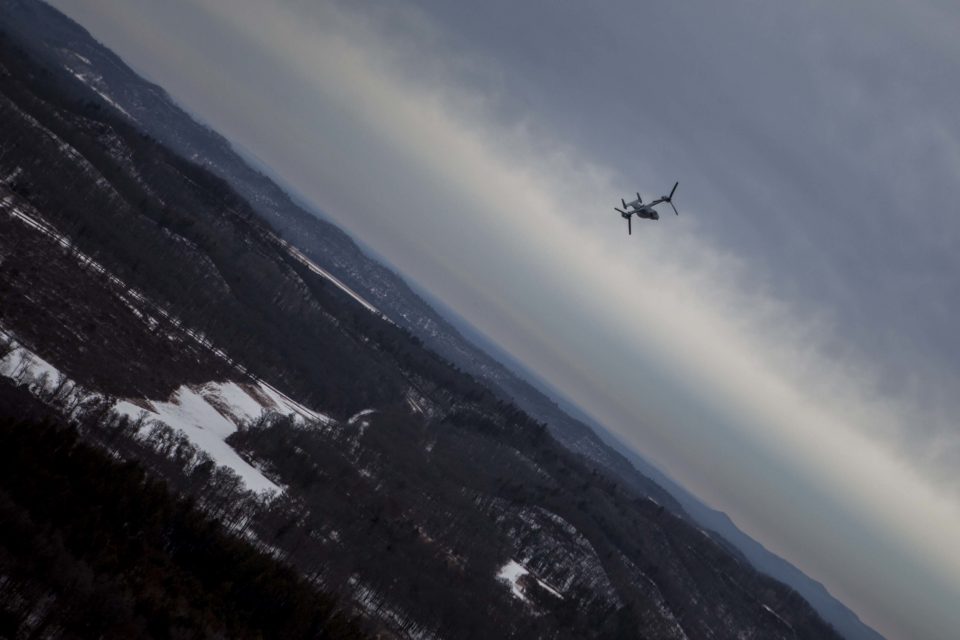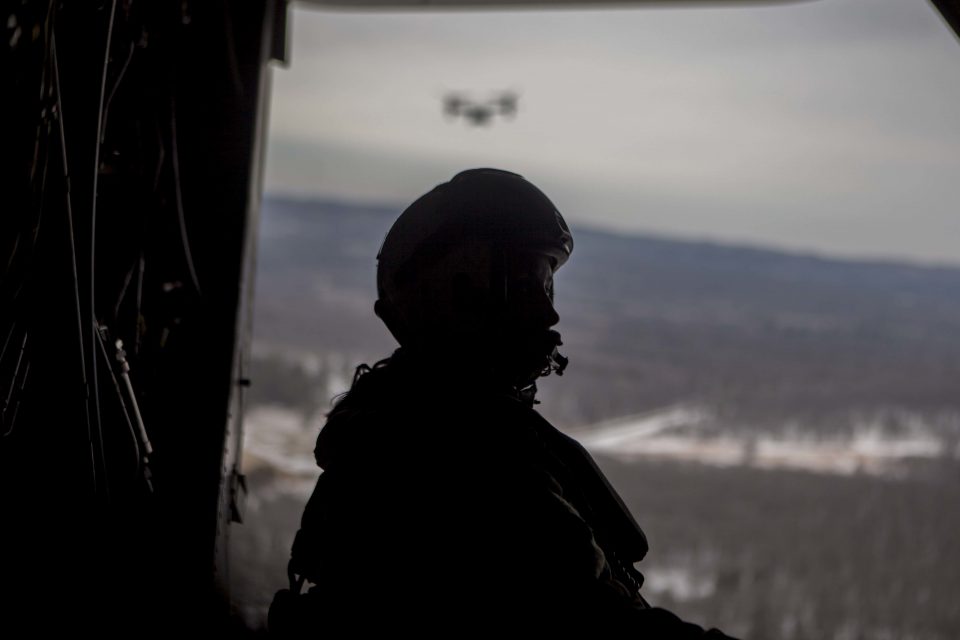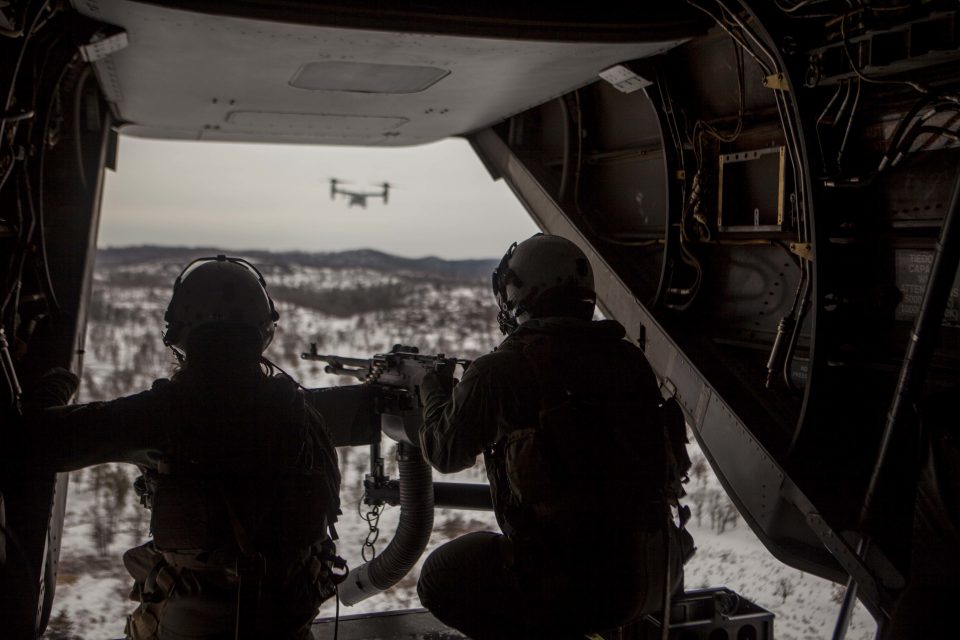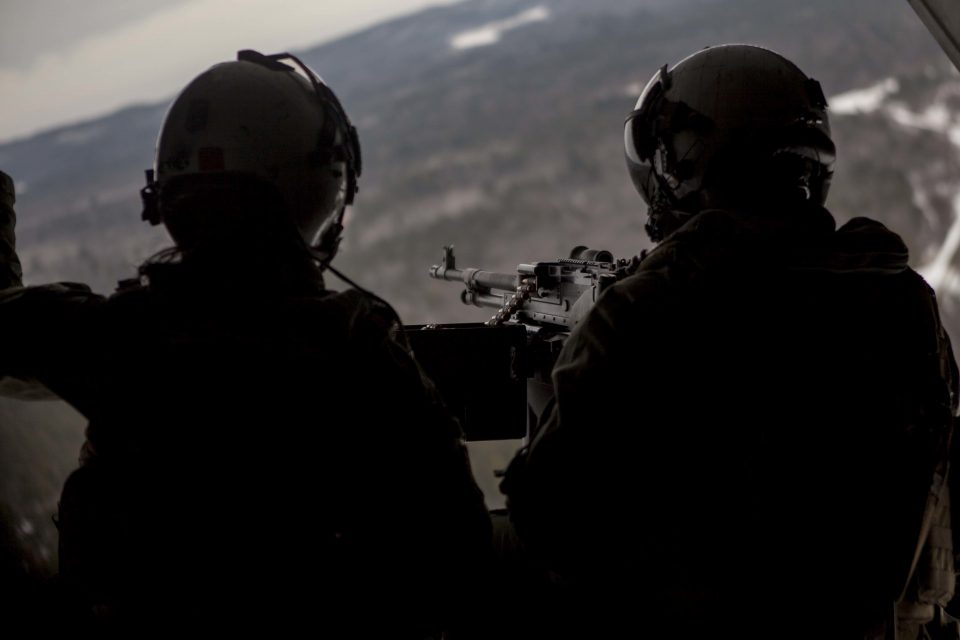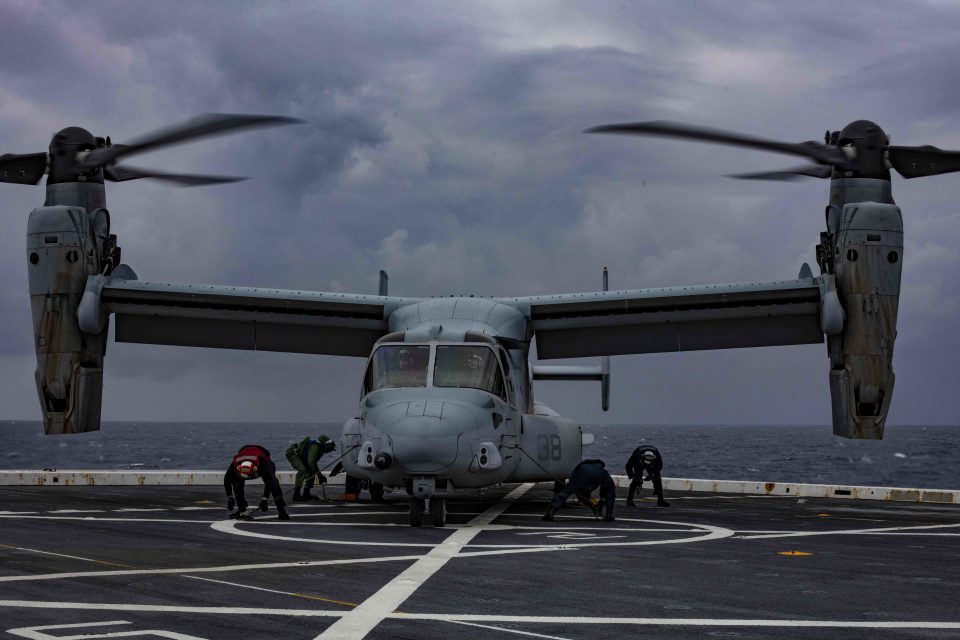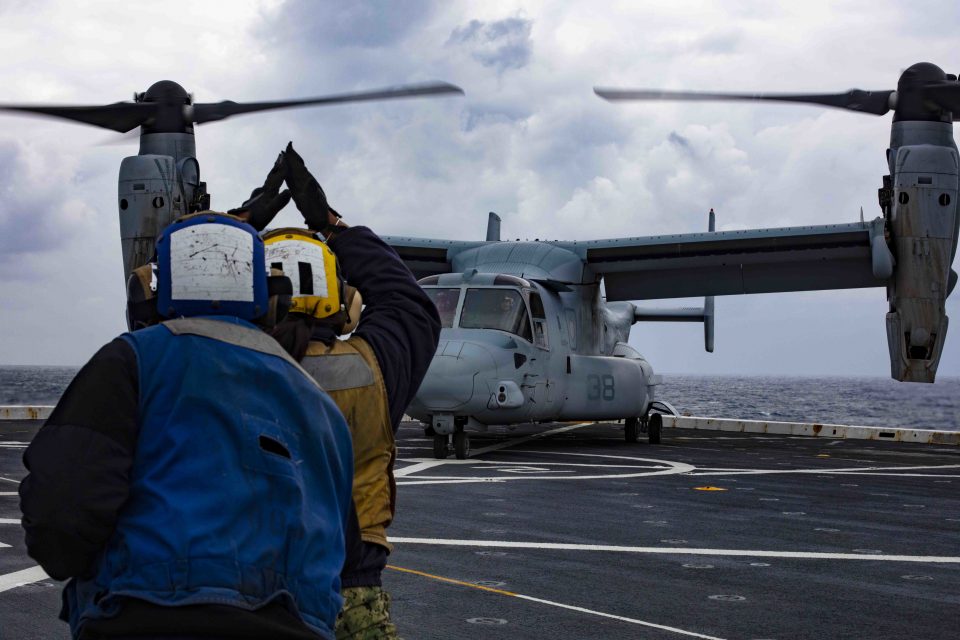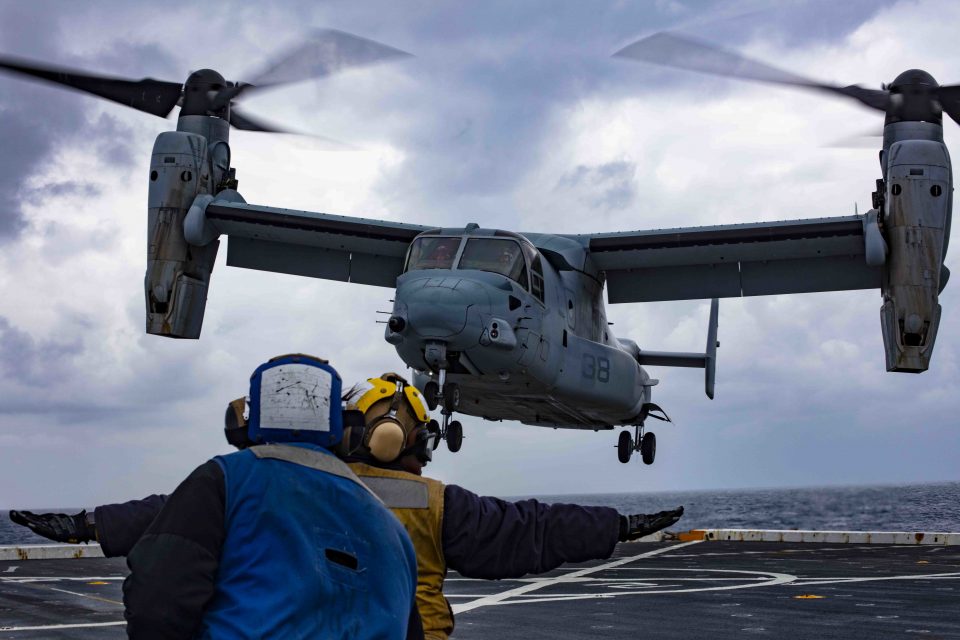By Robbin Laird
During a recent visit to New River Marine Corps Air Station, I had a chance to meet with the CO of MAG-26, Colonel Boniface and members of his team.
I first met him at the standup of the Osprey and viewed its first impacts on Marine Corps operations.
The early days of Osprey Nation required establishing a significant learning curve with regard to the aircraft and leveraging the Osprey in terms of changing USMC and USN concepts of operations.
The Osprey has spearheaded significant change with regard to the Amphibious Ready Group, in which the ships in the ARG-MEU would operate at much greater distance from one another, and migrated into what I have referred to as an amphibious task force rather than thinking of it as the traditional ARG-MEU and its three-ship operation within a 200 square mile box.
The inclusion now of the F-35B into the task force has added significant new capabilities which when added to the Osprey allow for a very capable force able to operate from the seabase.
But the Osprey as it has matured faces new challenges and obstacles to overcome as the Osprey Nation evolves and as the new heavy lift helicopter– the CH-53K — is added to the fleet as well as other new capabilities for the force.
A major challenge, which the USN-USMC team faces, is simply the shortage of amphibious ships from which to operate.
As the capabilities of the force have gone up, the number of amphibious ships has gone down.
Clearly, this is a challenge, which can be met, but only if there is a ramp up of amphibious ship construction.
There is also the very significant challenge to the amphibious fleet provided by the increasingly integrated digital force operating off of the ships in the fleet, namely, the IT and C2 systems are much more limited than what a digitally integrated force of Ospreys, F-35Bs and CH-53Ks can deliver to the ARG-MEU commander.
During our meeting in April 2019, Col. Boniface focused on two major challenges, which he sees with regard to the way ahead for Osprey nation.
The Training Challenge
There is a significant challenge and opportunity, which he sees with regard to training.
Prior to the US Navy and the Japanese acquiring the Osprey, the main focus has been upon training Marines or the Air Force, with the latter taking their training into the Special Ops forces, which operate the CV-22.
Now with the growth in Osprey Nation comes the challenge to provide adequate training opportunities to the new partners and allies within a single integrated training squadron operating within MAG-26.
The first aspect of the challenge is to ensure that the Navy pilots and maintainers do not repeat the sins of the past by following the same path which the Marines followed in its earlier days of learning how to operate the aircraft.
According to Col. Boniface: “Learning has definitively occurred over the last 15 years and we must incorporate those lessons learned and attempt to speed up the maturation phase by accelerating the process much like, “Sixth graders skipping middle school and going directly into high school” vice following a traditional model which takes them through the rest of elementary school into junior high school.”
“We know where the past mistakes were made and we have done a good job revising the entire syllabus. More to the point, we know what is critically important to operate successfully and safely this aircraft.”
A key way to do this is to have Navy pilots and maintainers serve on amphibious ships and to learn their skill sets in operational conditions—operating in the conditions that will replicate future missions.
According to Col. Boniface: “On the next MEU we’re actually integrating more Navy maintainers, more pilots and crew chiefs into a composite MEU ACE Squadron.
“This approach shows a lot of potential.
“These Sailors are not rookies; they have a tremendous amount of experience and while they learn how to maintain and fly an Osprey from ARG shipping they also provide vital aviation maintenance experience to our younger Marines.
“It is an absolute win for both services.”
Deployment decisions are made on a case-by-case basis, but clearly accelerate US Navy learning.
Cold Weather Training for VMM-266 Osprey Squadron from SldInfo.com on Vimeo.
The majority of the Navy pilots come from the Carrier Onboard Deliver or COD community in the US Navy, although there are SH-60 pilots as well.
But what the Navy has seen as the Osprey has flown to the Carrier is that the Osprey can land directly on the deck as a helicopter and does not need to trap. This means that the Osprey can fly into the carrier saving landing time and space as well.
Col. Boniface commented: “Some of our Navy partners recently flew out to a “big deck” carrier and performed a proof of concept flying the MV-22 in a COD mission scenario while integrating into the F-18 flight pattern.
“They were able to do maintain an integrated five-minute flight pattern around the ship without having to trap.”
“Bottom line, instead of having to take a trap, unhook, taxi etc., you just come in land like a traditional helicopter.
“You unload, load and your off again.
“No current COD approach has that capability built into it.”
New Users and the Expanded Global Fleet
A second major challenge is to ensure that the USMC’s new partners and allies operate safe and successfully for the Osprey has come to become a central player in the evolution of USMC capabilities. There is very little interest in having enhanced use by the US Navy or the Japanese lead in any way to negative performance, up to and including accidents of various sorts.
With regard to the training of the Japanese, the pilots and maintainers have to conduct all operations in English. This has been a challenge for the Japanese, but they have been showing a tremendous amount of success in this realm.
The growing numbers of Ospreys has some challenges of its own.
These largely revolve around parts shortages.
According to Col. Boniface: “The focus of the past couple of years has been upon getting more parts into the wholesale system while moving retail parts as close the aircraft as possible.
“The real challenge is how do we do this in a somewhat resource deficient enterprise.
“Prioritizing correctly while developing a suitable forecasting and reliability tool is the key to distributing supply material to the right user quickly and efficiently not just in the U.S., but throughout the world.”
There still is no global sourcing approach in terms of ensuring that parts are closer to the operational forces operating worldwide as opposed to ensuring parts are closer to the depots.
This would mean that the advantages which a global fleet of Ospreys could provide in a crisis would be reduced significantly as parts shortages, choke points and shortfalls would undercut the ability to leverage what the Osprey Nation could bring to the fight.
In past discussions with Col. Boniface, he has repeatedly underscored the importance of getting a solid global support system in place.
But clearly, we are not yet there.
This is how Col. Boniface put the challenge: “By right sizing, or more to the point balancing our community, we can more easily distribute supply material availability to the operator because we are better prepared to manage operational tempo.
“A global mindset allows for a refined flow of parts throughout the world because while we might not know exactly where the next fight will be, we have an accurate model for forecasting and reliability. ”
With regard to the supply chain, clearly the Osprey is facing major challenges.
Colonel Boniface put it this way:“ Our operational fleet is approaching 20 years old.
“We are now looking at mid-life upgrades which always ramps up maintenance costs and time.
“We have new partners and allies flying this aircraft and more possibly on the way, but we have not significantly refined or in some cases reinforced our supply material availability.
“PMA-275 at Pax River has been outstanding by ramping up Performance Based Logistics Contracts to ensure more effective delivery of parts on a timely basis.
“However, the growth in the community has not been fully accounted for in terms of the supply chain demand side.”
I added that from my work in Australia, the question of sustainability through a crisis simply augments the challenge, which he described.
If the Pentagon believes we’re dealing with high-end warfare demands, we have to have a supply chain that can deal with high-end crises.
That means however efficient the supply chain is currently, we have to actually relook at it from the standpoint of how do we maintain a global fleet for a significant period of time.


